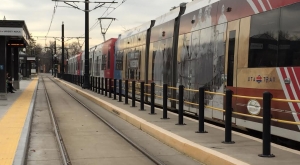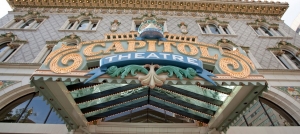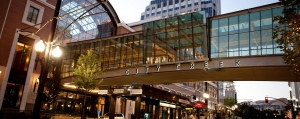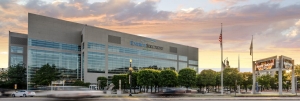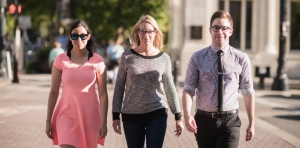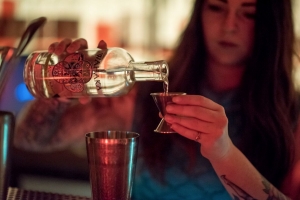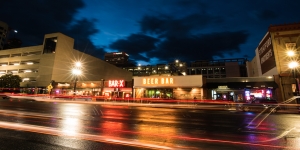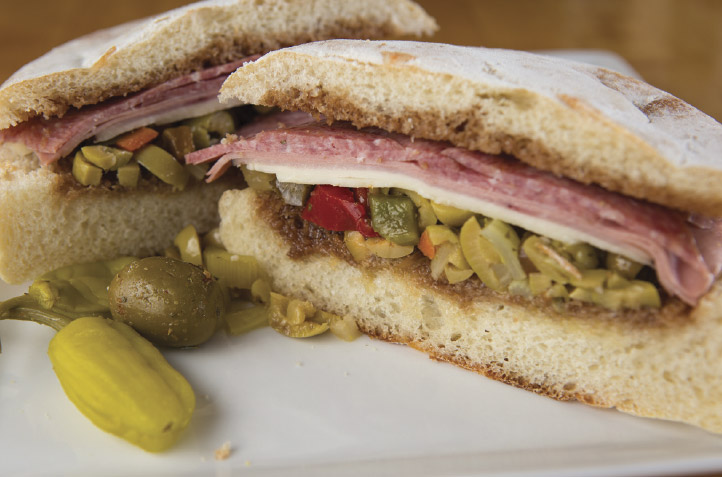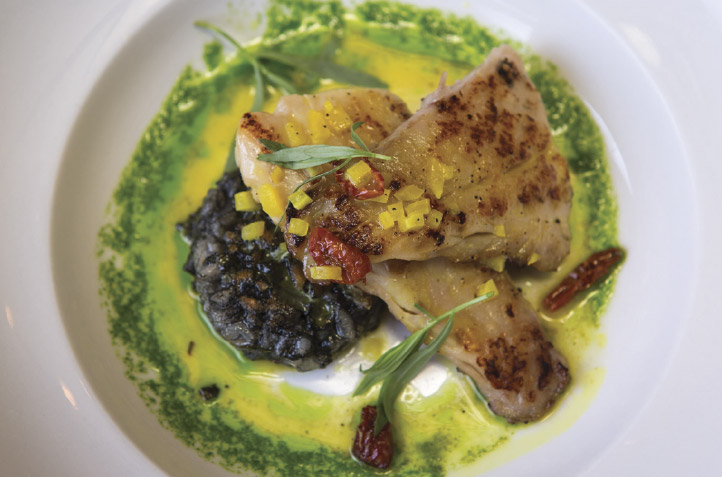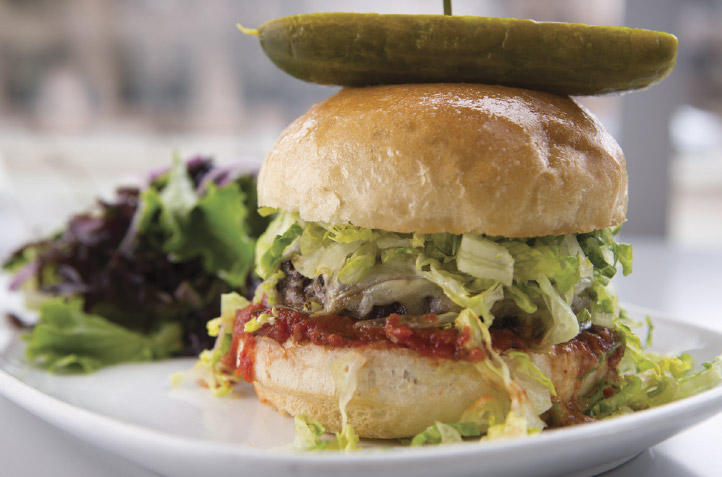DTA Staff
Explore Downtown with Your New Best Friend: TRAX!
If you’re a University of Utah student, you might be surprised to learn you’re entitled to free access to TRAX, Utah’s light rail system. The TRAX Red, Blue, and Green lines have been an integral part of Salt Lake City’s public transportation system for over a decade, and through a partnership with the Utah Transit Authority, the University has made it possible for every student to reap the benefits.
This fall, an average of 9,042 students per day took advantage TRAX--almost one third of the U’s student body. This means about 20,000 students are missing out on the convenience and freedom TRAX provides. If you’ve been out of the loop, it’s going to be okay. We’ve put together an itinerary to get you up to speed with all that TRAX and Downtown Salt Lake City have to offer.

Starting at the U, hop on the Red Line. With four stations on campus and trains every fifteen minutes, TRAX couldn’t be more convenient for University students regardless of where they are on campus. The University Medical Center Station is near the hospital, the Fort Douglas Station is near the Ute Soccer Field and the Eccles Legacy Bridge, University South Campus Station is close to the Utah Museum of Fine Art, and the Stadium Station is adjacent to your favorite football stadium and the brand new S.J. Quinney Law building.
A quick seven-minute ride on the Red line will take you to downtown Salt Lake City. Stop off at the Library Station if you want to check out Salt Lake City’s public library. But don’t just peruse the bookshelves—the library was designed by internationally-renowned architect Moshe Safdie and boasts a public plaza, sculpture garden, granite water wall, cafes, gallery space, and cozy reading rooms. If you want a little snack or fresh coffee to keep you energizes, you can visit the nearby People’s Coffee and enjoy a fresh and relaxed atmosphere.
One stop past the library is the Courthouse Station where you can transfer to the Blue and Green lines. While you’re waiting for your connection, take a look at the sculptures displayed at the station. The Utah Transit Authority has made public art a priority, and each TRAX station features unique artwork reflecting an aspect of the community. Or if you’ve got a few minutes, head to Ray’s Barber Shop for a quick cut and style. You know you won’t wait long for an experienced barber with so many chairs. Clean up your fade, straight razor that chin stubble and get a shoe shine to boot!
If you want to stick around the courthouse area a little longer, wander over to the Green Pig Pub where you can chow down on wings and listen to live music. When the weather is warm, you can grab a seat on the roof deck, sip a Stein, and watch the hustle and bustle of Washington Square.
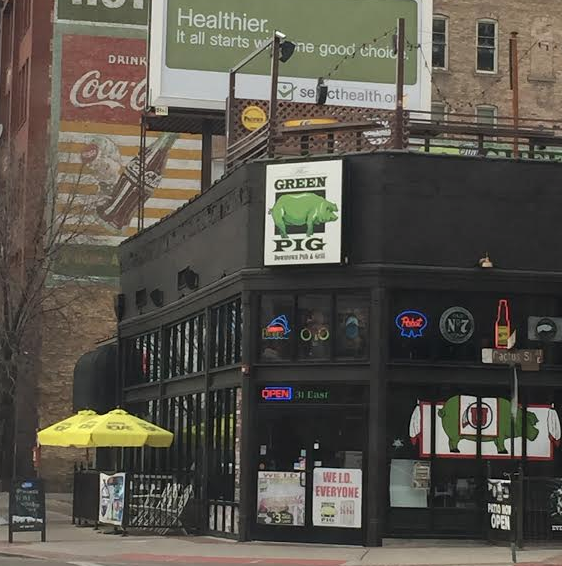
Both the Green and Blue lines stop at Gallivan Plaza. If you’re hungry you’ve got plenty of options here. On Thursdays between 11:00 and 2:00 the Gallivan Center hosts a food truck feast. You can choose from some of Salt Lake’s outstanding food trucks like Chow Truck, Cupbop, and Chop City. If you’d prefer a restaurant, you have some tough decisions to make. Takashi serves delicious and creative sushi rolls and Red Hot dishes up Kobe beef hot dogs with a funky culinary twist. Try the Reservoir Dog Burrito: this pup is loaded with bacon, corned beef, chili and cheddar. Don’t worry, there’s something for the veggie lover as well.
Once your stomach is stuffed, you can burn off that Bánh mì on the Gallivan Center ice rink, under strings of holiday lighting. Don’t have skates? Don’t worry—the $8 ticket includes skate rentals. If you’d prefer to sit back and relax, instead head to the Broadway Center Theater, a nonprofit community art house cinema. You can catch a documentary, indie, or international film and sometimes there are even free showings. Follow @SaltLakeFilmSociety on Twitter to stay up to date.
When you’re sufficiently tuckered out, get back on TRAX and take either the Green or Blue line to City Center. Hopefully the two-minute ride will be rejuvenating. Take a minute to scan some window displays and do some shopping at City Creek, then take a break at the Beer Hive Pub, a convenient place to take a breather on Main Street. In pleasant weather you can sit outside on the sidewalk terrace and people watch; if it gets stormy, head inside for a more traditional atmosphere. The pub features one of Salt Lake’s most extensive craft beer lists, and an ice slab for chilling your pint.

Temple Square Station, just two blocks away, is adjacent to Abravanel Hall, where you can listen to world-class symphonies on Fridays and Saturdays. With a student ID, tickets are only $10. Even if you aren’t into Bach and Mozart, you should take a look at the The Olympic Tower in the main lobby. The 30-foot tall, blown-glass sculpture commemorates the 2002 Winter Olympics. You should also take a peek at Temple Square itself. As the most visited tourist site in Utah, it’s sure to to impress. You can even enjoy a free organ performance every afternoon in the Tabernacle.
The Utah Museum of Contemporary Art neighbors the symphony hall. Exhibits are constantly changing, so you should probably become a member. If you’re only stopping by for the day, the museum recommends a $5 donation. When you’re finished, head to the gift shop and support local artists.
At the Arena Station, TRAX drops you off directly in front of the Vivint SmartHome Arena, where you can catch a Jazz game, concert, or convention. One stop further to Planetarium Station, and you’re at The Gateway, an open air mall encompassing the old Union Pacific Building. At Gateway you can visit the Clark Planetarium to see a free exhibit or watch a Cosmic Light Show. You could also check out the Urban Art Gallery and see more work of local artists. To finish off the evening, attend a show at The Depot. This year they’ll be hosting Dr. Dog, Joanna Newsom, and many others. As you walk back to the TRAX station, pass by the Olympic Snowflake Fountain and watch a choreographed water, lights, and music show.
You’ve had a full and exciting day, but the best news is that you don’t have to hunt for your car, pay for parking, and fight traffic on the way back home. Just find a seat on TRAX, slip in your ear buds, lean back, and enjoy the ride home.
The Legacy Three
Though Friedrich Nietzsche’s timeless quote, “That which does not destroy me makes me stronger,” has been used countless times to describe struggles both large and small by personalities ranging from G. Gordon Liddy to Kanye West, there is likely no more apropos words to personify Salt Lake City’s beloved pillar performing arts organizations: Ballet West and Utah Symphony | Utah Opera.
While dwindling public and private support during the Great Recession forced opera houses, ballets and symphonies across the country—many larger than their Utah counterparts—to close their doors permanently, Ballet West and Utah Symphony | Utah Opera endured. Utah’s resilient economy and faithful local audiences helped the Legacy Three survive the country’s worst financial times since the Depression. But ask representatives from each how their respective organization managed to come out on the other side of those challenging times stronger and more popular than ever, and you’ll get the same answer: an unwavering commitment to artistry.
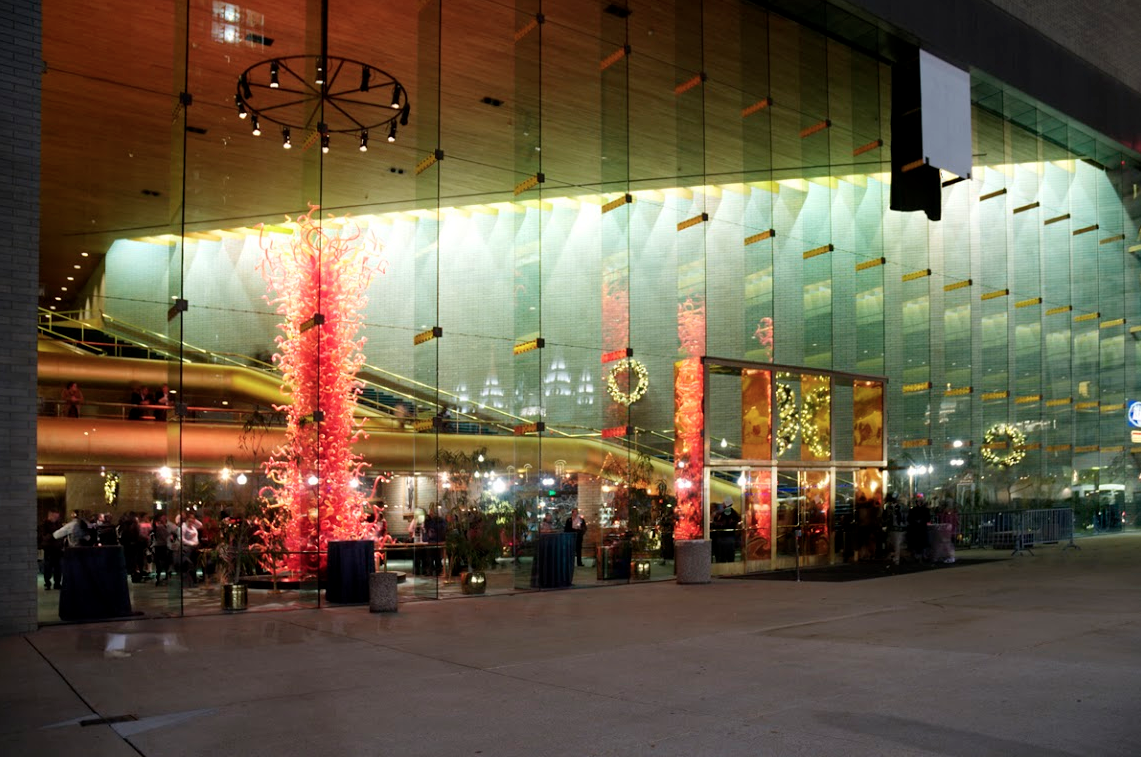
Utah Opera
The pursuit of excellence by Salt Lake City’s youngest cultural anchor—the Utah Opera (founded in 1978 by native Utahn Glade Peterson)—is based in the presentation of carefully curated seasons juxtaposing classic operas with more contemporary works. “I’m known for taking artistic risks, but there’s a fine balance when presenting new pieces,” says Utah Opera Artistic Director Christopher McBeth. “On the micro level, we include something recognizable within every season to help develop new audiences. On the macro level, world premieres or newer works are presented more strategically over the course of five or more seasons.”
Reflecting what McBeth points out as a current industry trend toward grand-scale productions, the Utah Opera’s 2015-16 season line up—Tosca, The Merry Widow, Aida and The Marriage of Figaro—falls squarely in the greatest hits category. “The complete season is ideal for both new and veteran opera goers, but if I had to recommend two I’d have to say Tosca, a famous, very realistic opera, written in a very cinematic way, set to music that’s better than any film score. It’s an ideal choice for those new to opera,” he says. “And Aida, a very grand, over-the-top opera with big colorful sets with lots of people on stage and a storyline that includes plenty of shock and awe, will dazzle even the most experienced opera aficionado.”
Other ways the Utah Opera is maintaining its artistic relevancy is by seeking out the next generation of singing actors. “To keep the art form alive, we need to showcase new talent,” McBeth says. To this end McBeth spends the off-season taking in operatic performances and festivals across the country and abroad looking for fresh talent, often casting singers right out of conservatory. But that doesn’t mean he eschews the established veterans. “We’ve found that the casts audiences enjoy the most are those made up of both established and emerging actors,” he says.
By combining old and new, both in terms of the operas selected for production and the actors cast to bring those stories alive, the Utah Opera treats audiences to a rare sense of discovery. “Our audiences know that every time they come to the theater they will not only get to see a high quality production, but they will also—even if they are seeing an opera for hundredth time—get to experience something new,” he says.
Ballet West
Similar to its operatic counterpart, Utah’s second-oldest Legacy Three performing arts organization, Ballet West, was built on an artistic foundation spanning both classic and new works. Hinged on founder Willam Christensen’s interpretation of American classical ballet, the company became a beloved fixture from its founding in 1963, particularly for Christensen’s renowned The Nutcracker, which remains a pillar of the company’s repertoire to this day. But over the past several years, a series of events—some intentional others serendipitous—have heralded in an unprecedented era at the Intermountain West’s preeminent dance company, high times that even Christensen probably never dared to dream of.
Foremost in Ballet West’s recent emergence is Artistic Director Adam Sklute, a 23-year veteran of the Joffrey Ballet, appointed to his current post in 2007. Under Sklute’s direction Ballet West has presented more than 55 world premieres, revived lost elements of Christensen’s beloved The Nutcracker, and introduced the wildly popular annual Innovations program. The company has also pursued a very active touring schedule, including two acclaimed runs of The Nutcracker at Washington D.C.’s Kennedy Center for the Performing Arts in 2012 and 2014 and a March 2015 residency at New York City’s Joyce Theater where the company performed the world premiere of Helen Pickett’s Games.
Likely as a result of Sklute’s diligence in elevating Ballet West’s national profile, in 2012 the company was featured on The CW’s reality television series, Breaking Pointe. The show, running for two seasons, made celebrities of its principal dancers and brought unparalleled brand awareness to the company, particularly in the social media realm.
And then in December 2014, Ballet West opened the long-awaited, 55,000-square-foot, $22 million Jessie Eccles Quinney Ballet Centre, an achievement Executive Director Scott Altman called “a watershed moment” for the 52-year-old ballet company. “Ballet West’s artistry has always been world class. Now that the Centre is complete we can build on all the remarkable work that came before with the talent assembled in our development in marketing teams and really take advantage of this new invigorated moment in time for Ballet West,” Altman says.
The proof is in the numbers. Tickets sales for Ballet West’s 2014-15 season were up 16 percent overall and revenue at the Ballet West Academy, one of the most renowned dance education institutions in the country with eight studios at three locations (downtown at the new Ballet Centre, at Trolley Square and at Thanksgiving Point), was up 70 percent. Perhaps the year’s most significant fiscal achievement, however, was elimination of the company’s 33-year operational debt.
Ballet West’s plans to maintain this extraordinary momentum in the 2015-16 season with an array of classic favorites, modern masterpieces and contemporary works. Iconic Classics opens the season in November with a diverse triple bill including Fancy Free, On An Overgrown Path and Symphony in C. In December, the company presents the 60th anniversary of The Nutcracker. Romeo & Juliet makes its Utah debut in February. Opening in April is The Nijinsky Revolution, three modern retellings of the legendary-dancer Vaslav Nijinsky’s groundbreaking choreography. The season rounds out in April with the return of Innovations, a showcase of cutting-edge and up and coming choreographers. “Our 2015-16 season shows off the breadth and scope of our repertoire and the astonishing versatility of our dancers,” Sklute says. “Our dancers are great athletes, artists and story-tellers, and our productions are of the highest caliber. Few companies in the world can master a repertoire that is so rich and varied. It is a groundbreaking season with something for everyone and I am so excited to present it to our audiences.”
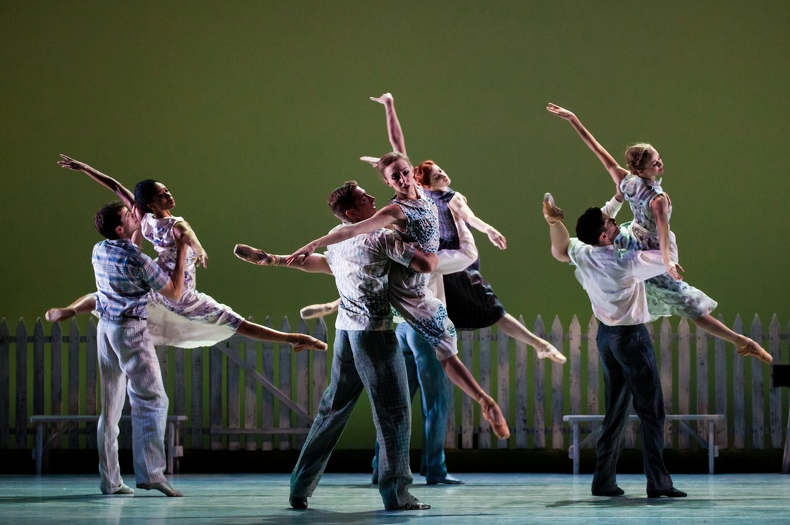
Utah Symphony
Presenting something for everyone is exactly how Utah’s patriarch arts organization, the Utah Symphony, built a worldwide reputation for uncompromising artistry. Maurice Abravanel, symphony music director from 1947 to 1979, nurtured the fledgling orchestra (formed in 1940) into a leading American ensemble, leading the symphony on four international tours, releasing more than 100 recordings and developing an extensive music education program. Today, the Utah Symphony presents more than 70 performances each season at Abravanel Hall and participates in the Utah Opera's four annual productions at the Capitol Theatre (The symphony and opera merged operations in 2002.) in addition to numerous community concerts throughout Utah and the annual outdoor summer series in Park City, the Deer Valley Music Festival.
Most would agree, however, that in the last several years the Utah Symphony has gone through a renaissance infused with a new dynamism. The catalyst for this new found energy can be largely attributed to Thierry Fischer, the symphony’s rock star-persona music director. “Thierry has provided incredible leadership and has very intentionally built up the skill level within the orchestra,” says Patricia Richards, Utah Symphony interim president and CEO. “Many people have commented that the symphony sound different than it did years ago.”
In the six years he’s helmed the Utah Symphony, Fischer has added a cadre of young, rising-star musicians to the orchestra; nationally recognized talent including Associate Concertmaster and violinist Kathryn Eberle and Associate Conductor and pianist Rei Hotoda—the first woman to hold this post.
The 2015-16 season represents the Utah Symphony’s 75th and the schedule created by Fischer and his staff is truly worthy of this diamond milestone. Highlights include a two-week Beethoven Festival and cycle of the composer’s complete symphonies; performances of Mahler’s Symphonies 5 through 9 to conclude the Orchestra’s two-year complete symphony cycle of the composer in honor of Abravanel; orchestral world premieres to be recorded for future release; collaborations with Utah Opera, Ballet West, Utah Shakespeare Festival, Mormon Tabernacle Choir and The Madeleine Choir School; a 75th anniversary gala concert featuring pianist virtuoso Lang Lang; and the Utah Symphony’s triumphant return to New York City’s Carnegie Hall. “The 2015-16 season represents many attractive and inspiring programming challenges, and a culmination of our vision to collaborate and connect to people through live music,” Fischer says.
Salt Lake City is a thriving, cosmopolitan destination due in no small part to the world class cultural moorings providing by Ballet West and Utah Symphony | Utah Opera. Shaped by Utah’s pioneering past, the Legacy Three shepherded Salt Lake City into the exciting present with aplomb and have proven their resiliency and artistic foresight to chart Utah’s course for what’s sure to be an artistically vibrant and rich future.
5 Benefits of GREENbike
Even if you never ride a GREENbike, the program makes your commute easier and air cleaner, at an average cost of less than a few dollars per household per year. Here are five benefits to Salt Lake residents:
1. GREENbike has removed more than 1.3 million vehicle miles from local roads.
- Decreasing traffic congestion for autos.
- Less cars on the road reduces road maintenance costs.
2. Inversion diversion
- Removing 1.3 million vehicle miles equals cleaner air for everyone.
3. It's one of the most cost-effective forms of public transportation.
- One mile of roadway costs $90-100 million.
- One mile of light rail costs $50-80 million.
- The entire GREENbike system was built and operated for three years with about $1million in tax investments.
4. GREENbike offsets a majority of costs with private sponsorships and ridership revenue.
- 39% of revenue is raised with private sponsorships.
- 17% was collected via ridership revenue. Only 44% has come from local and national tax dollars.
5. Improved community health
- GREENbike users have collectively burner 19 million calories. That’s 62,376 cheeseburgers!
This month GREENbike reached 100,000 rides for the year; a milestone that set a national ridership record. Of the 70 automated bike-sharing systems in the U.S, no other system that directly charges users for service has reached as many rides so quickly, and with as few bikes.
Listen to an interview with GREENbike director Ben Bolte to hear more.
Listen to the interview here.
At Home in City Creek Center With Linda Wardell
It’s early downtown and the sun is still rising behind the Wasatch Mountains. The 7AM TRAX glides along Main Street, and pulls into the City Creek station. Throngs of commuters pour through the open doors. They walk in, around and through this experiment in urban renewal that the International Council of Shopping Centers called an “outstanding example of visionary architectural achievement in sustainability and innovative design.”
Bankers, line cooks, janitors, lawyers, servers and other downtown employees all converge on downtown hours before the shops open. City Creek Center is transformed into a hive of movement completely unrelated to a retail experience. Connecting and welcoming people from across the region is one of the primary reasons City Creek Center was built. And the Center’s utility is only fully realized when it is teeming with diverse crowds. Nothing makes Linda Wardell happier.

The charismatic general manager came to Salt Lake City in 2010 to open City Creek Center for Taubman Corp. which owns and manages the retail component of the project. After opening centers across the United States, she has found a home in Utah and at City Creek.“The part of my job that I love the most is interacting with the shoppers, neighbors and tourists that fill the center every day,” She said. “I spend a couple of hours every day in the center and my favorite thing to do is stand at Richards Court and see so many different kinds of people all having a fantastic time. I’m especially thrilled when people bring their friends and family from out-of-town. It’s such a compliment that this is one of the places they choose to share as part of our capital city.”
Form and Function Collide
“Ten years ago, our partners at The Church of Jesus Christ of Latter-day envisioned the development of these two blocks as a way to enliven the entire city center,” Wardell said. “City Creek is a model for urban architecture, not only in the design and construction, but in its purpose and operation.” Much has been written about the bells and whistles of the center, from the retractable roof to the Rainbow trout that swim the center’s namesake feature. Less focus has been paid to the intentions of the developers and operators of the site. The aspirations for City Creek Center are more than just a nice shopping mall. The goal was to transform the entire downtown core.
Influenced by city planners and national urban design best practices, City Creek Center has 16 access points to surrounding streets, significantly more than traditional malls. The center is dissected by walking paths that are open 24 hours per day. It is one of the most porous privately owned blocks in the Central Business District. One evidence of the center’s integration into the rest of the city center: only 40 percent of City Creek’s shoppers use the center’s garage which means that 60 percent of the center’s customers arrive in some other way – through public transit, walking, biking or coming from another downtown destination.
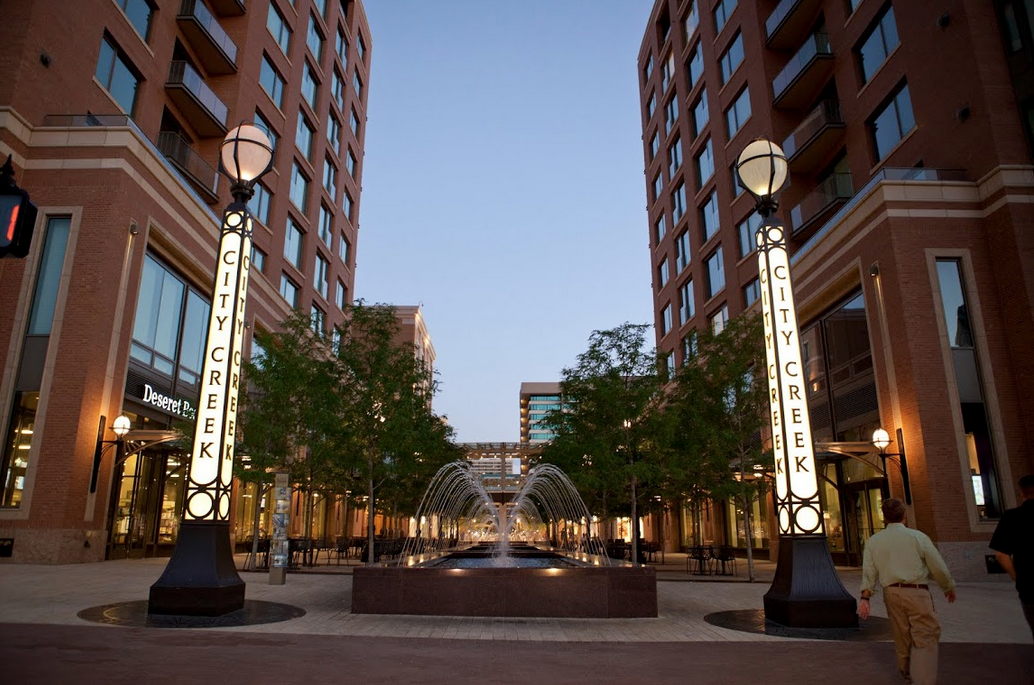
A Good Neighbor
Wardell is a committed and engaged neighbor – not just for surrounding downtown storefronts and cultural amenities, but also for the larger municipal community. “City Creek is a gathering place for people from neighborhoods around the community,” Wardell said. “If you draw a circle 10 miles around the center, it would include Glendale, Rose Park, North Salt Lake, Centerville and Bountiful, the Avenues, Central City, Yalecrest, Liberty Park, Sugarhouse, 9th and 9th, South Salt Lake and of course downtown. These are our shoppers and you see an incredibly diverse group of our neighbors here every day.”
“People get a sense of ownership about their downtown here,” Wardell said, “when people come to City Creek Center they are usually also incorporating another event like the Farmers Market, a Utah Jazz game or Utah Symphony performance. Sometimes they are just eating in a restaurant like Martine, Eva’s Bakery or Café Molise before or after visiting us. We understand that we are part of a larger downtown experience that is more than just shopping.”
As part of a commitment to community stewardship, City Creek Center has supported diverse groups including the Utah AIDS Foundation, EVE, the Utah Museum of Contemporary Art, the Junior League, The Road Home, Volunteers of America, Ballet West, United Way, Utah Symphony and Opera, Human Rights Campaign, Equality Utah and the Downtown Alliance.
Shoppertainment
The retail world continues to change and shopping and entertainment centers must evolve to stay relevant. City Creek epitomizes this kind of successful evolution. Increased competition from Internet shopping sites and suburban malls means that successful retail centers must offer more than just the right stores and products. They have to create an experience and appeal to shoppers emotional and social well being, too.
“City Creek Center is about creating an experience that people can’t get through the Internet or in a traditional mall setting,” Wardell explained. “Shoppers are looking for something different today than they were in the past. They want their favorite stores, but they also want to have an authentic and distinct experience that is beautiful and social.”
Quantitative research recently released by the Downtown Alliance shows that City Creek is a regional destination, attracting a wide swath of age groups, income levels and a broad cross section of Utah shoppers from along the Wasatch Front. This is in stark contrast to many suburban shopping centers that draw from a smaller geographic footprint and appeal to specific age groups. City Creek Center draws from a wide cross section of income and demographic groups.
“This is the urban center for a 250 mile radius,” Wardell said. “We draw on shoppers from Idaho, Wyoming and we benefit enormously from being across the street from the Salt Palace Convention Center.” About 40 percent of the money spent at City Creek comes from outside Utah’s borders and includes shoppers who are skiers, national parks visitors and convention delegates. “We really benefit from being in the heart of the convention district and look forward to the completion of the convention headquarters hotel, recognizing the huge economic benefits that it will bring to the entire state.”
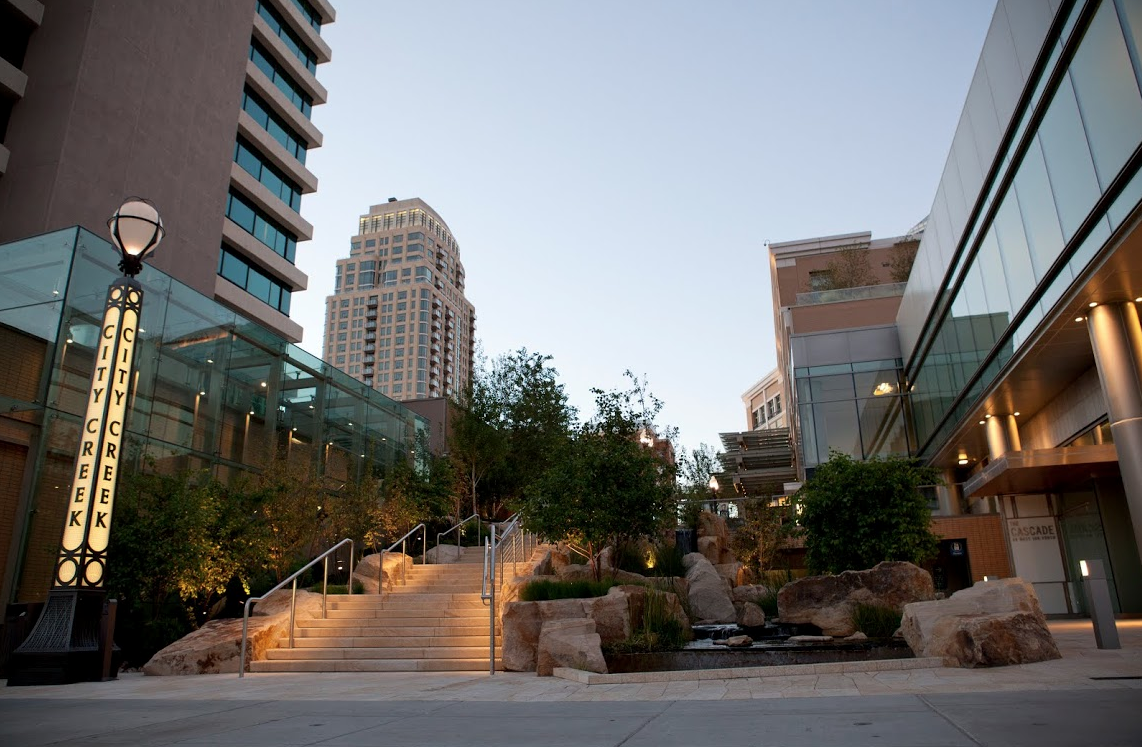
The Great Glass Ceiling
City Creek Center is known for a giant glass retractable roof, but the center has helped to shatter another kind of glass ceiling in Utah. Wardell is a prominent female leader of a major Utah institution and the region’s flagship entertainment and retail center. “When I came to Utah, I understood I might be watched and observed by many people and I needed to consider my actions, words and deeds because whether I wanted to be a role model or not, I would be – for my peer group, women in other organizations, and people who would come after me.”
Along with former Democratic state senator Pat Jones, Wardell has helped to champion the creation of the Women’s Leadership Institute. The mission is to elevate the stature of women’s leadership in Utah. Wardell notes a significant increase in attention and resources that Utah leaders are expending to help support more females in leadership roles. “I’m seeing that dynamic change now and I think that’s a really positive thing,” she said. “I think helping to support change is a responsibility I have and I try to set a good example. I may not be the smartest person in the room, but I can make sure I am the most prepared person in the room.”
At Home in the Beehive State
Few of Wardell’s colleagues at Taubman believed she would stay in Utah once City Creek Center was open. But she has found a home in Salt Lake City and is committed to spending the rest of her life here. “When I came to Utah, I told everyone I was looking forward to the Utah lifestyle,” she said. “All my friends thought I was crazy. I told them I would have a great experience – people would be friendly and welcoming, similar to the South and it has exceeded my expectations.”
The Georgia native said Salt Lake City was a huge shift from Southern New Jersey where she was the General Manager of the Pier Shops at Caesars, a shopping mall on Atlantic City’s boardwalk. “People here are the nicest people that I have encountered in the many places that I have lived,” she said. “ I have been embraced, accepted and warmly welcomed, especially in the downtown business community.” Wardell credits Utah’s lifestyle, geography and sense of community for the decision to stay. She recently relocated her parents to Utah from Georgia to keep her family close.
“When people have lived here their entire lives they don’t fully appreciate what we have here,” she said. “When you move to a place like this that is beautiful, clean and safe and the people are wonderful, I would be crazy to want to leave this place.”

This is the Community's Place
Whether you are a fan of country music, basketball, pop divas, big truck shows or family friendly spectacles, downtown Salt Lake City has a gathering place. More than 1.8 million people annually find the best in sports and entertainment at EnergySolutions Arena, which began construction 25 years ago as the most high-tech, state-of-the-art arena in a five-state region. But after a quarter of a century the venue is showing a little gray hair, and owners of the arena – the Larry H. Miller Group of Companies – are taking steps to ensure its world-class status and its desire to continue serving the community.
“The bones of this building are really strong,” says Steve Starks, president of Miller Sports & Entertainment. “It’s timeless in a way because the arena has been so well taken care of through the years. However, it is also time to explore options on how to invest in a type of facility that could house a championship-caliber team and provide best-in-class guest experiences. We have had moments of brilliance occur in the arena, but there are more memories to be made here.”
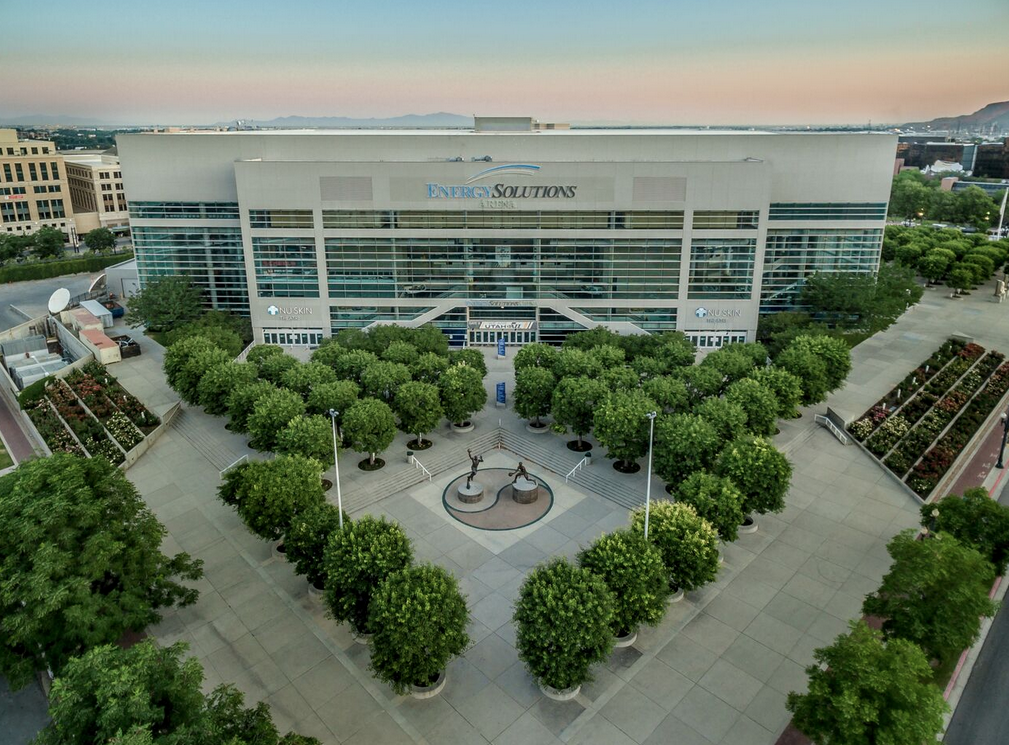
As the home of the Utah Jazz, the downtown arena has been the professional sports heartbeat of the community. Its emergence along West Temple has anchored an integral city hub, spawning new businesses, restaurants, hotels and shopping, light-rail connectors, and a complementary facility to the convention center. Its rising a quarter of a century ago to a gathering place for first-class entertainment in Utah was an act of personal sheer will.
By the summer of 1990, Larry and Gail Miller knew that purchasing the NBA’s Utah Jazz wasn’t enough to keep the team in the state. At the time, they were playing in the now defunct Salt Palace arena, which seated just more than 12,000 spectators. From conversations with former NBA Commissioner David Stern, the Millers knew that they needed a 20,000-seat arena with luxury suites to keep their small market team afloat.
In typical Miller fashion, Larry and Gail had a vision; one that no one believed could come to fruition, but with Larry’s relentless drive, they powered on. Larry and Gail rarely did things just for themselves; they usually had a broader vision in mind. They decided that they would go after an undeveloped, dilapidated block on what was then the far west side of downtown and work with the city’s redevelopment agency to bring a brand new, multi-use, 20,000-seat arena to Salt Lake City ahead of its time. They knew, that if they built it, Jazz fans, events, concerts and crowds would come.
“Larry and Gail always believed in giving back to the community,” said Larry H. Miller Group of Companies CEO, Clark Whitworth. “Putting together the financing for the arena was one of the hardest deals we ever did in our more than 20 years of working together. We learned a lot. If not for Larry’s pure passion for the project, Gail’s unwavering support, and what the project could do for this community, I’m not sure we could have pulled it off.”
By May of 1990, the Millers had secured the approvals and funds to build the arena. Their desire was to have the doors open for the first game of the 1991-92 Jazz season. This left only 15 months to build a nearly the venue. Because of this, the facility was being designed as it was being built, in phases.
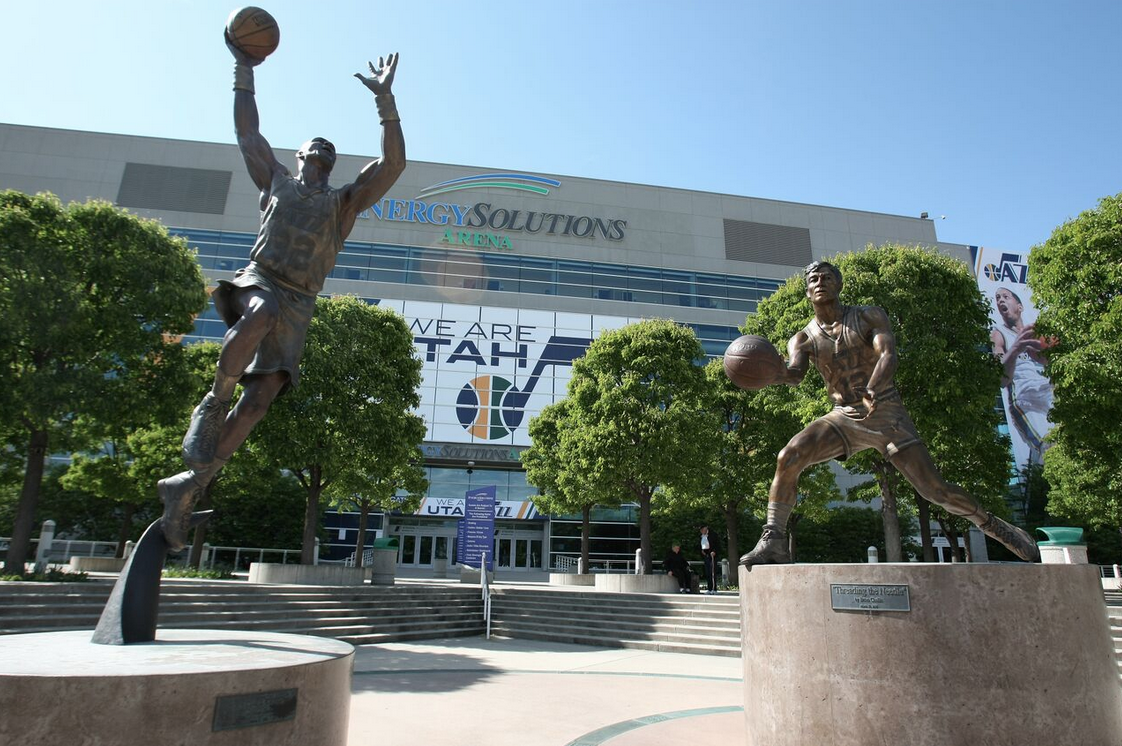
At the time, they also owned the International Hockey League’s Salt Lake Golden Eagles. The Eagles game against the Peoria Rivermen on Oct. 16, 1991 was the first public event hosted in the brand-new arena. The first headliner concert to play the location was Oingo Boingo on Oct. 24, 1991.
Mark Powell, vice president of events and general manager for the venue, recalls, “We opened the doors to the arena in October of 1991 to a sold-out Oingo Boingo concert. Since then, the facility has hosted nearly every major touring concert in the world including U2, the Rolling Stones and Garth Brooks. ,’ he said. “One of my favorite memories is from the 1997 NBA Playoffs. Tina Turner was on our stage while the Jazz were playing in Houston against the Rockets and John Stockton hit ‘the shot’ that sent us to the NBA Finals that season. The crowd roared and Ms. Turner could not figure out what was happening as the adulation was not in timing with her run of show.”
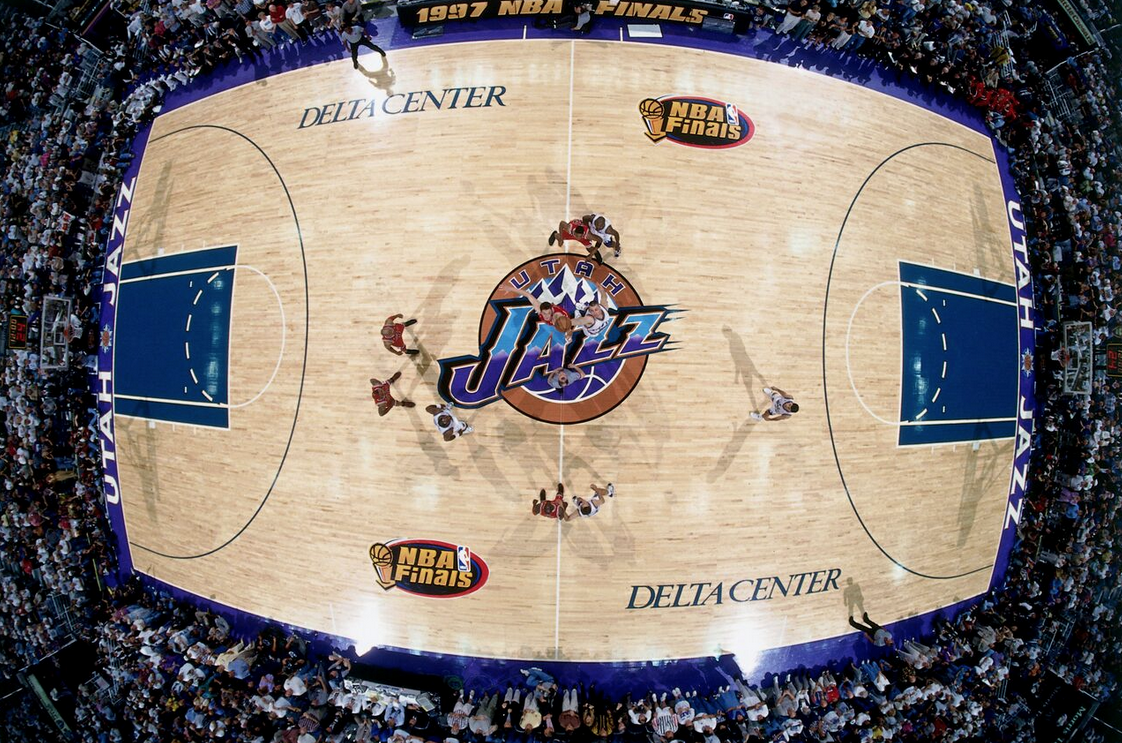
In 1993, the Utah Jazz hosted the NBA All-Star Game in Salt Lake City. Team President Randy Rigby recalls a special moment that not only brought players together, but also families and the community.
“I will always remember seeing the arena packed with not only NBA fans, but Jazz fans as well. At the end of the game, John and Karl (Malone) were holding up the co-MVP trophy with their small children in tow,” Rigby said. “This moment captured the spirit of Salt Lake and created an iconic memory for not only the Jazz basketball family, but for this community, which prides itself on being so family friendly as well.”
During the 2002 Olympic Winter Games, the venue was renamed the Salt Lake Ice Center, for the Games. The surprise gold-medal figure skating performance of American Sarah Hughes and the double-medal breakout of Apolo Anton Ohno in short track speed skating are among the many signature sports moments at the arena.

“Taking over the venue for 20 plus days in the middle of the NBA season was a remarkable feat. Without the generosity of Larry and Gail Miller, we would have not been able to make it happen,’” recalls Lori Kun, the sport manager for the Salt Lake Organizing Committee. “Many of the arena’s guest services staff, including greeters, ushers, and ticket takers volunteered their time for this once-in-a-lifetime experience. Larry personally spoke at our volunteer training session and it was incredibly emotional and inspirational for us all.”
Since the arena’s opening in 1991, 22 new facilities have been built around the league for NBA teams. Only six NBA arenas currently in use by the Golden State Warriors (1966), New York Knicks (1968), Milwaukee Bucks (1988), Sacramento Kings (1988), Detroit Pistons (1988) and Minnesota Timberwolves (1990) are older than the home of the Utah Jazz. Each of these franchises is in the process of building a new arena or implementing a significant renovation plan.
In the last five years, about $25 million has been invested into EnergySolutions Arena. With an emphasis on enhancing the fan experience, upgrades include an improved public address system, enlarged concourse entries with retail and food offerings, digital direction and concessions signage, the addition of the Legends Club, two Fanzz stores and the expansion of the main team store, and numerous energy efficiency projects. The most significant improvement was a $15 million investment prior to the 2013-14 season for the installation of a new high definition video display system and other building infrastructure. Appearing bigger than life, the center court video boards are seven times larger than their predecessor with twin, 42-foot-by-24-foot screens that run the length of the court.
The defining characteristic that brings the building its national renown is its sheer volume during Utah Jazz home games. Rigby notes, “The Jazz have a passionate and knowledgeable fan base that gives us a homecourt advantage. We have an enduring relationship with the community and sincerely appreciate the loyalty, enthusiasm and support of our fans.”
For nearly 25 years, it has been a shared experience with the community. The presence of the downtown arena has contributed to the economic vitality of the region, improved the quality of life through world-class entertainment and rallied citizens through the fandom of sports. With its 7.6 million pounds of rebar and more than 80,000 square feet of glass, the arena still has a personality that brings bright eyes and big smiles to its visitors of all ages.

Hot Spots
Successful cities can always be sliced into micro-neighborhoods. Downtown Salt Lake is really a collection of these hot spots that together combine to create a dynamic and diverse experience for local and visitors alike.
Temple Square:
Whether it is flowers in the spring time or the holiday light installations, Temple Square is the literal and figurative center of Salt Lake. The iconic Salt Lake Temple, is not only a religious symbol, it has been the iconic image in downtown skylines since it was constructed. Surrounding Temple Square are a host of Temple Square themed restaurants including the Nauvoo Cafe (15 S. Temple) and Lion House Pantry (63 S. Temple) along with attractions like the Beehive House (67 S. Temple), Family History Library (35 W. Temple), Joseph Smith Memorial Building (15 S. Temple) and the Church Office Building’s observation deck (50 N. Temple).
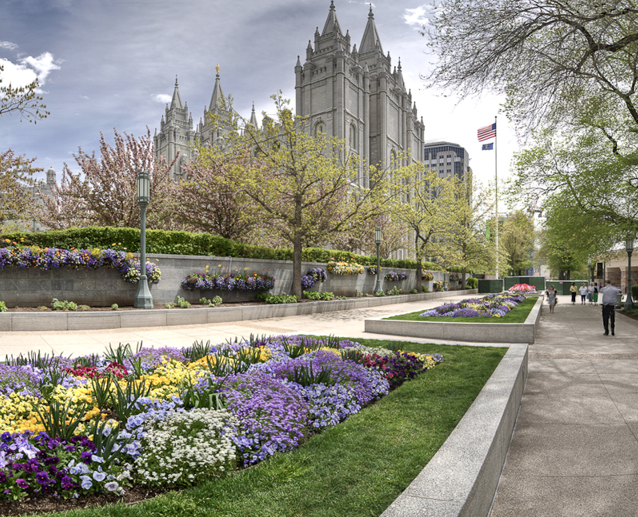
Pioneer Park:
The western environs of downtown is home to a burgeoning community, anchored by a 10-acre urban park and featuring some of Salt Lake’s hippest dining options. Cutting edge restaurants Tin Angel (400 S. 365 W.) and Pallet (237 S. 400 W.) sit on the south and north borders of the park, respectively, and neighborhood stalwarts Cucina Toscana (282 S. 300 W.), Caputo’s (300 S. 314 W.) and Carlucci’s (300 S. 314 W.) are a continuation of the Italian influence found between 200 and 300 W (see below). Up and coming eateries, Bruges (300 S. 336 W.) and Ekamai (300 S. 336 W.) are joined by Rose Establishment (235 S. 400 W.), Aquarius Fish Market (300 S. 314 W.) and Bingham Cyclery (300 S. 336 W.) providing a variety of options for a surge in housing options. The residents at the successful Broadway Park lofts (300 S. 360 W.) will be joined by several hundred new downtown denizens next summer when Garbett Homes completes the 360 Apartments project on 400 W, continuing a steady rising interest in the Pioneer Park neighborhood.
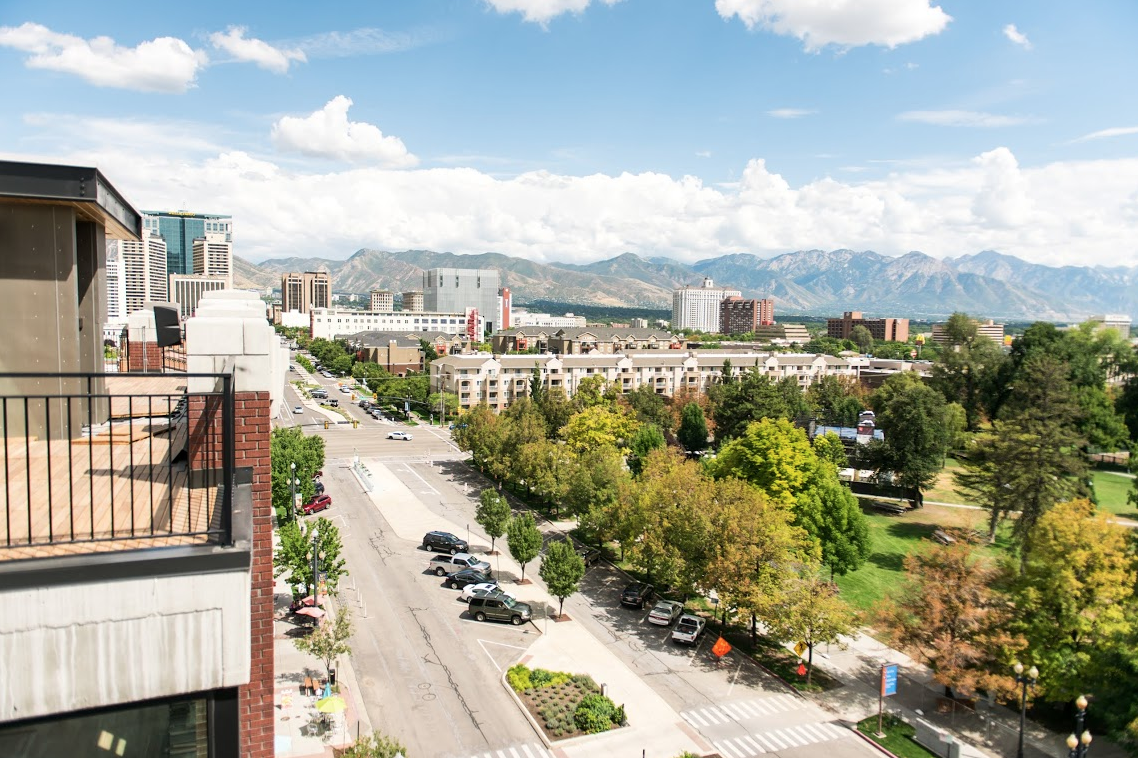
Little Italy (300 S, between 200 and 300 W):
There is nothing little about the brick oven Settebello Pizza (260 S. 200 W.) brought to Salt Lake. Climbing hundreds of degrees higher than a typical home (or restaurant) oven, the thin-crust pies are an authentic slice (pun intended) of Italy. If you want to eat like you would if you were “in the boot,” opt for your pizza to be served uncut into slices and eat like you would as if in Rome: tearing the pliable dough into bite size pieces yourself. If you’re craving more than pizza, Valter’s Osteria’s (300 S. 173 W.) menu allows a diner’s eyes to order larger than most stomach’s can handle. House made pastas, salads and entrees finished table side, grilled meats and hand-made desserts are a show in of themselves. But, the real show is the eponymous Valter. A Brooklyn transplant, the tireless impressario dances his way through to restaurant to ensure everyone’s plate is full long after their appetite has been satisfied. Zest, a gluten-free and vegetarian provide seasonal options, many of which are familiar: pizza, manicotti, baked pomodoro. Trust us, you won’t miss the gluten! Those in the mood for more casual fare will find pizza by the slice at Sicilia Pizza (300 S. 35 W.) and family-style meals at Buca di Beppo (300 S. 202 W.). Wash it all down with a nightcap at Squatters (300 S. 147 W.), who offer a range of European influenced brews.
200 S Nightlife Hub:
Who says you can’t bar-hop in Utah? Clearly, they have not been to 200 S lately. Start off by grabbing a bite to eat at Este Pizza (200 S. 156 E.) or Cedars at Lebanon (200 S. 152 E.), both offering great food, with adult beverages. If tacos are more your speed, Todd Gardiner’s Taqueria 27 (200 S. 149 E.) opened up shop across the street, with one of the lengthiest tequila lists in the state. The adjacent three doors open into mixologists plying their craft at Bar X, Beer Bar’s (200 S. 155 E.) lengthy selection of taps or bottles imports and the casual Johnny’s on Second (200 S. 165 E.). So, whether the night calls for classic cocktails, craft beers or a few pitchers and billiards, 200 S is the place to maximize options and minimize steps.

Main Street:
Neighborhoods are typically built around a center point, but can also be linear, and Main Street anchored on the north by Temple Square and City Creek, is a prime example. While just off Main Street, Martine (100 S. 22 E.) is adjacent to the forthcoming Eccles Theatre (131 S. Main St.) and Regent St. In addition to being a standout lunch spot, the tapas and wine options are a classic date-night go to choice. Recently renovated, Martine will be a standout hotspot with theatre-goers. Moving south, office buildings effortlessly mix with street-level retail, bars and restaurants.
Best experienced by foot, a stroll on Main Street turns up new discoveries along the way. The next block south is home to Eva’s Bakery (155 S. Main St.), who serve meals to order, as well as pastries to go. Thirst can be quenched at Beerhive (128 S. Main St.), where a portion of the bar-top is made of frozen ice to keep brews cold. Michelangelo’s (132 S. Main St.), located next door, serves Italian fare and is also available at Beerhive.
If you’re in the mood for sushi, Yellowtail (321 S. Main St.) has you covered, while Bistro 222 (222 S. Main St.) covers those craving creative new-American fare. Bambara (202 S. Main St.) is consistently rated a top downtown restaurant - don’t miss the bleu cheese chips - and around the corner on 200 S the Red Door (200 S. 57 E.) creates Salt Lake’s most interesting martinis. Keys on Main (242 S. Main St.), is a staple of the downtown scene, featuring talented performers on dueling pianos and an always enthusiastic crowd.
Whiskey Street (323 S. Main St.) is popular with bourbon and rye aficionados, and offer a lunch and dinner menu that is more gourmet restaurant than bar fare, while Cheers to You (315 S. Main St.) is a popular neighborhood bar. Maxwell’s (357 S. Main St.) is a go-to for a slice of pizza with live sports on dozens of TV’s.
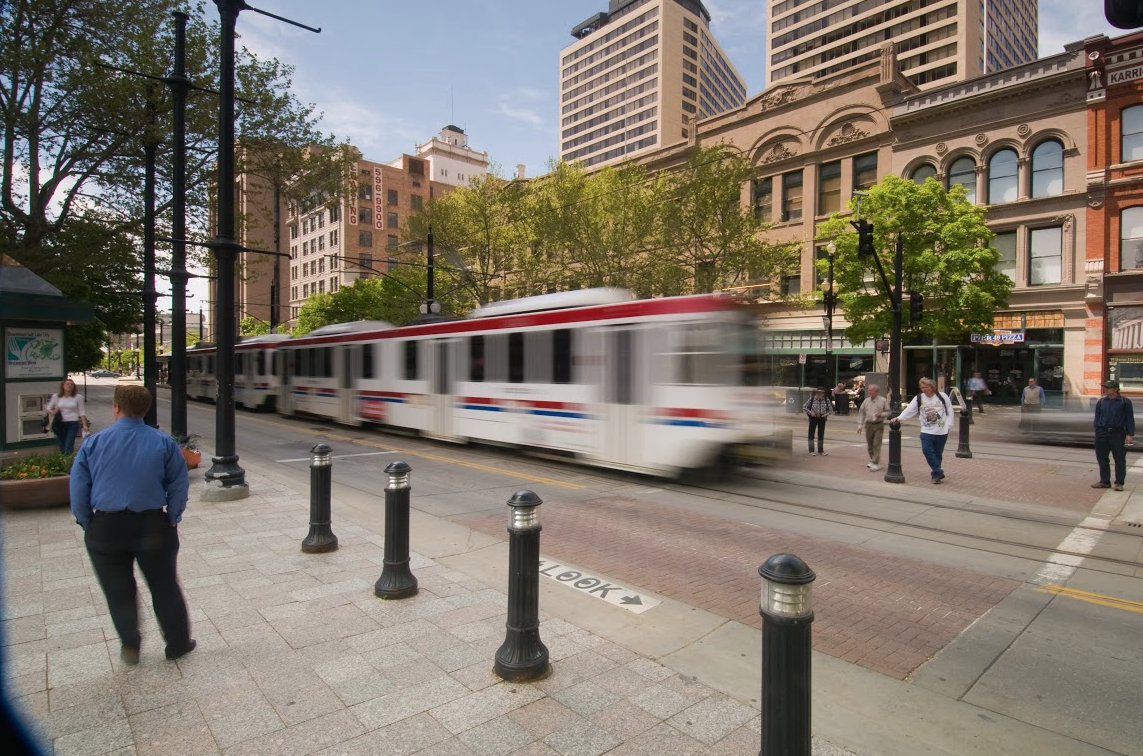
100 South (Salt Palace Convention Center):
The block west of Main is a “trip” for your palate. Caffe Molisse (100 S. 55 W.) transports taste buds to Italy, with an approachable menu including (you guessed it) pastas and grilled meats. The rest of Europe, and the world, really, is covered at neighboring BTG (100 S. 63 W.). An abbreviation for “By The Glass,” BTG brought a revolutionary wine-tapping system to Salt Lake, allowing them to offer high-end wines by the glass, whereas bottle selections are typically the only options for rare vintages. Flights by region or grape are available, and the educated staff is happy to help navigate the plethora of selections. The Far East’s signature dish, sushi, is more than food at Naked Fish (100 S. 67 W.): it’s an experience. Expert chefs slice and filet fresh fish to create imaginative dishes with seafood from around the world. Familiar rolls, salads and appetizers are available, but Naked Fish truly shines when opting for the “omakase”. Literally translating to “I trust you,” the chef creates a custom menu spanning several courses for diners seeking an unforgettable trip through flavors and textures.
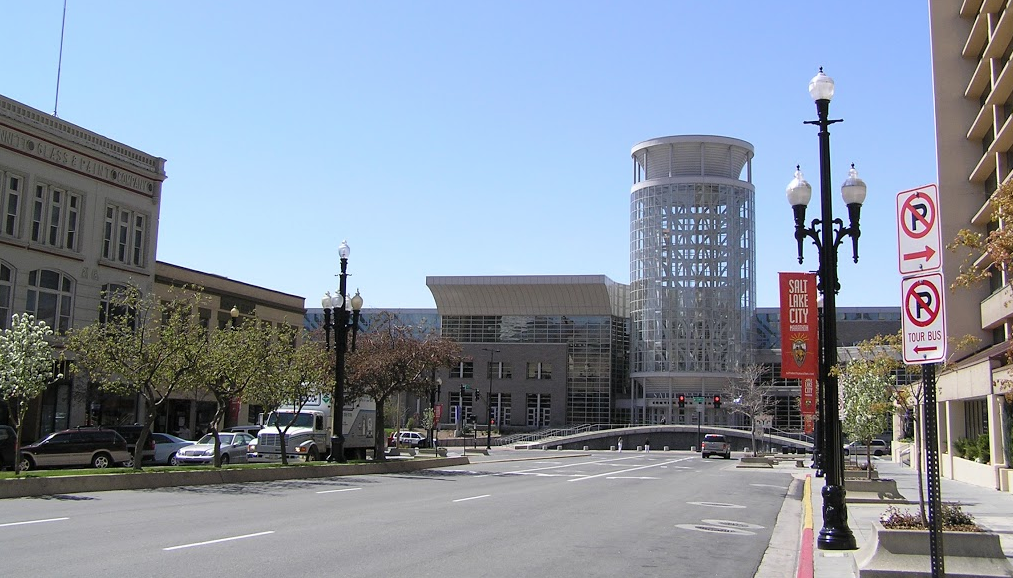
State Street:
In the mood for an indie flick? The Broadway Center Cinemas (300 S. 111 E.), runs sundance films, documentaries and a wide-range of independent work on their six screens. Neighboring Copper Onion (300 S. 111 E.) is consistently ranked as one of downtown’s top restaurants, perfect for a dinner and movie date. Ryan Lowder, the mastermind behind Copper Onion, created Copper Common (300 S. 111 E.) just a few doors down and always abuzz with activity. Inventive cocktails and gourmet takes on comfort and pub fare is a sure bet. From Scratch (62 W. Gallivan Ave.), creates handcrafted pizzas, starting, literally from scratch with an in-house flour mill. They’ve also won awards for the best burger in the state. Alamexo (268 S. State St.) blends traditional Mexican options with a modern cuisine approach and boasts a wide selection of tequilas and margaritas to pair with a meal.
Urban Campus
Amid all the business types bustling around Salt Lake’s urban center, a growing population of students are choosing to live in the heart of the city. When they are not studying hard they are playing hard downtown and bringing a young, ambitious vibe to Utah’s urban center.
Florence Hernandez, 19,
Neumont Univerisity
Major: Computer Science.
Florence Hernandez moved to Salt Lake City sight unseen from Forth Worth, TX to pursue her computer science degree at Neumont University’s Main Street Campus. And although, she most likely has no idea who Mary Tyler Moore is, the vivacious 19-year-old certainly had her “Mary Tyler Moment” twirling in the streets of her new city streets last fall. “It was so clean and it was colder than where I’m from,” she says. “It felt so invigorating, like a breath of fresh air. Everything was so bright and roomy, I loved the energy. I really felt like I was starting my life.” Hernandez, who was a standout student back home, always knew she was going to leave Texas and says she chose Neumont because of its tech emphasis and accelerated three-year program. And she loves her school and quickly got involved, becoming Neumont’s first ever female student body president and quickly making friends. “In my first week I just knew everyone was like me, they didn’t know anybody either and I was just so excited and happy I think my enthusiasm helped me make a lot of friends,” she says. “Back home I was an outcasts my interests were so different but here there are lots of people who like the same things I do.” Hernandez lives near 300 South and 600 East and loves walking downtown to school every day explaining that she “grew up in this suburban area where it took a 30-minute drive to get anywhere, I love using my legs.” When she’s not hard hitting the books she’s exploring her new city. “There is always something to do, always a new place to discover, some little crevasse that becomes our new hangout spot,” she says. “It continues to blow my mind.”
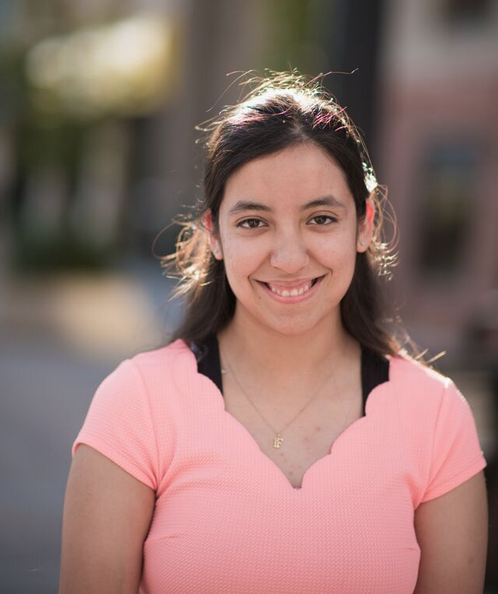
Kris Boardman, 36,
University of Utah
Major: Business Communications
Kris Boardman took the long way towards finishing her degree. After high school in Ogden she started at then Weber State but realized she just wasn’t ready or focused enough to pursue school seriously. And that’s how Kris Boardman approaches everything: seriously. So she got a job working for international hotel company Wyndam and saw the world, traveling constantly for work. After spending her 20s in a corporate life on the road, she hung it up and took a year off to play. “I decided I wanted to travel for myself, and try new things,” she says. “I needed that break.” Then she got serious and headed back school with a decade of practical work experience under her belt. “The University of Utah is really good for non-traditional students,” she says. “They don’t expect me to join sorority or do a bunch of activities.” During her previous life she had lived near Trolley Square but traveled so much that she never really got to know the city. So when she opted to resume her studies she deliberately chose to locate herself in the artsy Pierpont Area of downtown. “I am such a city girl,” she says. “I love walkable neighborhoods and I love the buzz. I walk to the farmer’s market, to restaurants and like the sense of community here. I like knowing the restaurant owners and people at the businesses I frequent.” Boardman loves school and says she is glad she took the time to work and gain experience before resuming her studies. When she’s not hard at work on campus she’s on a trail run in Millcreek, getting her namaste on at Centered City Yoga and exploring her city. “Most of my friends live between downtown and Sugar House,” she says. “Everybody bikes to everything and I just love that there is this awareness towards greener healthier lifestyles. I like that that’s the norm here.”

James Goodman, 25
Utah Valley University
Major: Management
James Goodman loves Utah Valley University but he says he wanted to live in downtown Salt Lake. “I grew up in Orem but moved downtown five years ago,” he says. “I just love it and it’s worth it to me to drive or take the train so I can live here.” Goodman lives near the library and says it’s the perfect neighborhood for he and his husband Jeffrey Gomez. “We just love walking over the Les Madelines or stopping into Bar X, we can go to all the festivals and the farmer’s market, and the Gallery Strolls are always nearby,” he says. “ Christmas in SLC, is an especially special time for James and Jeffrey, who celebrate their wedding anniversary walking amid downtown’s Christmas lights. “It’s funny but when we bought our condo we thought we didn’t want to live in Utah forever. But I feel completely differently now. I could spend years here.” Salt Lake’s open vibe suits Jeffrey and James just fine and like many “new urbanists” he says they chose to live an “experienced-based” life. “We’re not paying for a big yard,” he says. “We’re paying for being able to walk around the corner to our favorite store. I don’t want to spend my time mowing a lawn or cleaning a big house. We want experiences.”

Stirred and Shaken
Craft cocktails have taken Salt Lake by storm over the past few years and the proof is in the wealth of incredible mixologists working throughout the city. Meet three ladies who are pouring their heart and soul into their own signature, beverages behind the bar at The Vault, Under Current and Bar X.
Julie Owen
The Vault at Bambara, Bartender
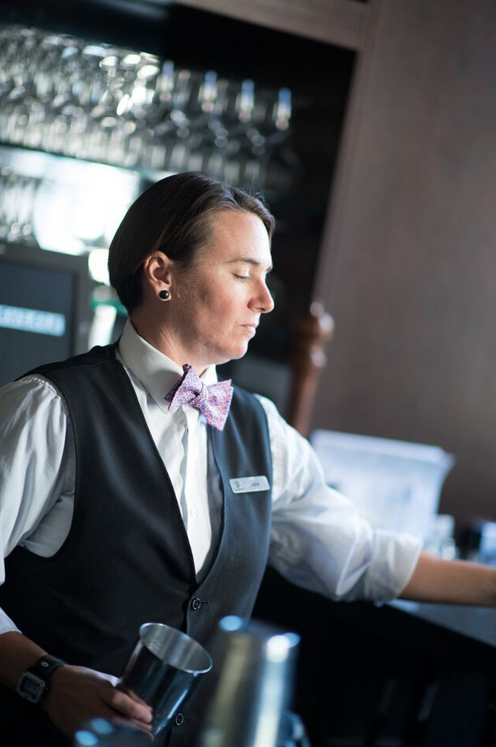
Owen has a knack for remembering regular customer’s’ favorite drinks. With 14 years experience in the food and beverage industry she’s perfected her craft on the job at The Vault. “I love that the bar staff at Bambara has the freedom to create our own cocktail lists, order the wines, beers and spirits that we want to sell, and that we are fully empowered to take care of our guests and any problems we might come across,” Owen explains. With whiskey being her favorite spirit, “I’ve been a fan since my grandfather first let me sip on a taste of his Crown Royal,” Owen shares her recipe for the Dickel Dew.
Dickel Dew cocktail recipe:
1.5 oz. George Dickel rye whiskey
Muddle Bing cherries with whiskey
Shake small amount of lemon juice and lemonade with a touch of simple syrup
Pour over whiskey and cherries
Add 1/2 oz. of red wine (preferably fruit-forward wine) over top
Zest lemon over top leaving the twist in the drink
Amy Eldredge
Under Current Bar, General Manager
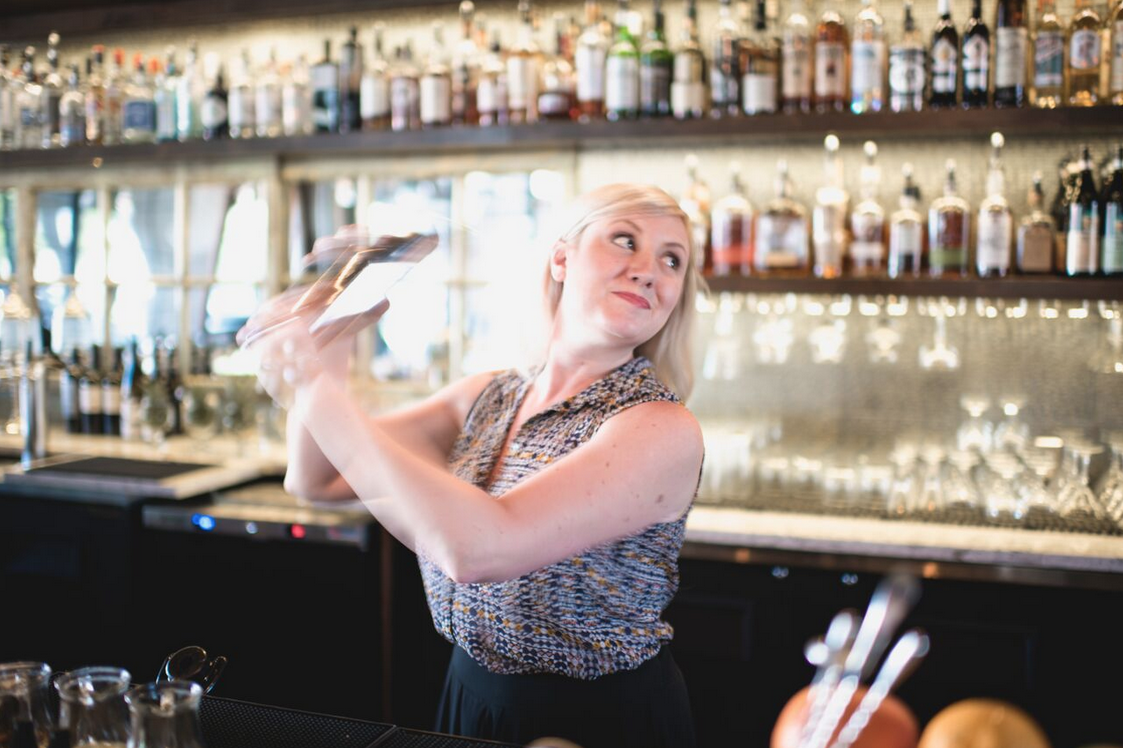
Eldredge is one of the most recognized name in Salt Lake’s craft cocktail community. She’s implemented a new cocktail menu and trained staff on craft cocktail nuances at Bar X; redesigned the cocktail program for The Grand America hotel; and conducted extensive training programs for the staff at Takashi, Copper Common and Rye. She is also the president of the Utah chapter of the United States Bartending Guild. Eldredge has been spending her time recently educating customers about absinthe so she shares her recipe for The Siren with absinthe and locally made Beehive Distilling gin—of which she loves the sage, rose petal and herbal notes.
The Siren cocktail recipe:
Egg white
3/4 oz. fresh lemon juice
3/4 oz. simple syrup 1:1
1 oz. Absente absinthe
1 oz. Beehive Distilling gin
Dry shaken to emulsify the egg white and give the cocktail body, then cold shaken and strained up. Garnished with a sage leaf.
Carly Bringhurst
Bar X and Beer Bar, Bartender
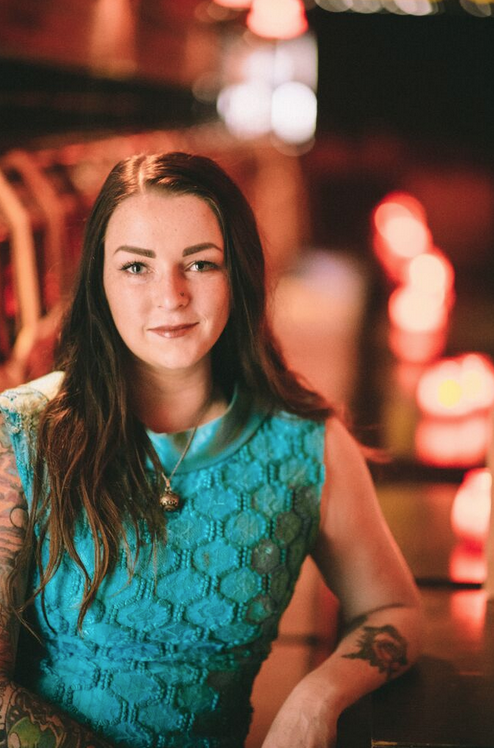
Although Bringhurst has been a bartender for just shy of three years and she’s already making her mark in the Salt Lake scene. You’ll find her Carlita on the cocktail menu at Bar X and her excitement for the profession is contagious. “I just want to become really good at it and eventually teach others what it is that we do and how to do it really well.” Bringhurst’s current liquor of choice is mezcal and it’s the star of her Sweet Dee cocktail. “It’s sweet, creamy and kind of smoky from the mezcal,” Bringhurst explains. “I made it up as a good introductory drink to egg cocktails.”
The Sweet Dee cocktail recipe:
1 whole egg
1/2 oz. orange juice
1/2 oz. apple brandy
½ oz. simple syrup
1 1/2 oz. mezcal
Chocolate bitters
Add all ingredients and dry shake. Then add ice and cold shake. Strain into chilled coupe, then top with chocolate bitters.
New Issue of Downtown the Magazine
Discover the sights, tastes and people of Downtown SLC in the fifth edition of Downtown the Magazine. Read about Linda Wardell (cover story) and her experience as the General Manager of City Creek. Meet the women behind the downtown renaissance, learn why tech companies are choosing downtown to call home and grab a fork and dig into Dine O'Round with our dining guide for SLC's best flavors.
Also included are stories about EnergySolutions Arena, the legacy three (Downtown's performing arts), street art, a holiday guide and more!
Launch the entire digital magazine here: Downtown The Magazine
$15 & $30 Three Course Dinners
If you like to eat out, Dine O'Round is akin to Christmas is September for foodies. More than 50 downtown restaurants offer diners two-item lunches for either $5 or $10, or three-course dinners for $15 or $30. There are no coupons to clip or internet specials; all you have to do is ask for the Dine O'Round menu.
Gourmet and Casual Options Available
Running from Sept. 11-27, Dine OâRound encompasses three weekends, as well as the two full week sin between. Options range from gourmet - think Copper Onion and Takashi-to casual options, as well as newly opened restaurants.
Veterans use Dine O'Round as a way to try out new restaurants, as well as the opportunity to revisit old favorites.
New restaurants this year include Blue Iguana, Bourbon House, BTG Wine Bar, Caffe 222, CYTYBYRD Cafe, Finca, Pleiku, Michelangelo's, Same Sushi, Twist and Vinto.
VIEW ALL PARTICIPATING RESTAURANTS
For many, as close favorite behind actually eating at restaurants, is memorializing the experience by taking photos of said meals. Weâre on board with this!
Diners are encouraged to post their photos on instagram using the hashtag #DineORound and are entered to win our Win Dinner For a Year contest.
Check out our instagram feed at instagram.com/downtownslc

